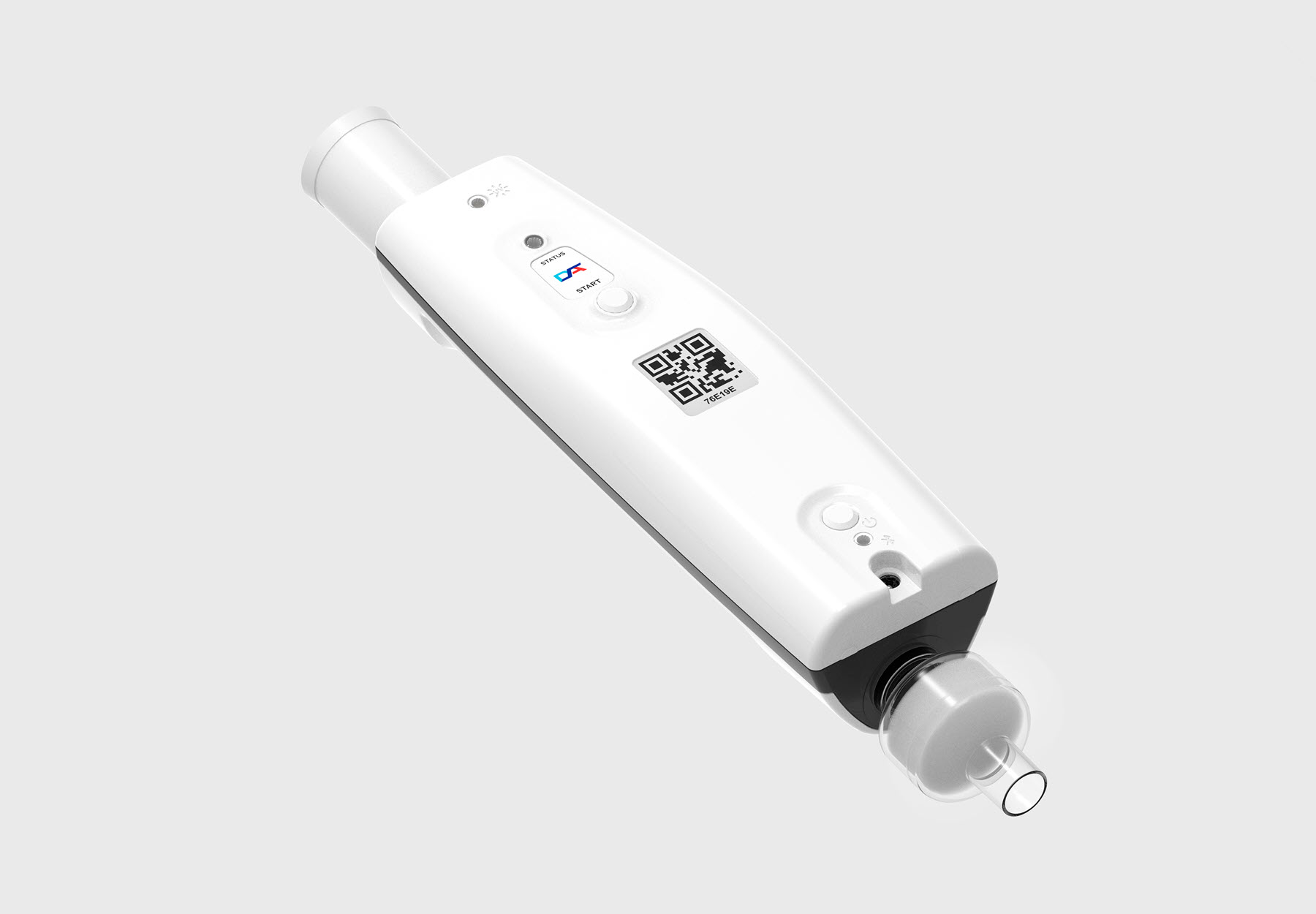Finnish Firm Gets First CE Marking for a COVID-19 Breathalyzer Test
The race to bring a workable COVID-19 breathalyzer test to market is on. Finnish company Deep Sensing Algorithms (DSA) has gained the early lead by becoming the first test maker to secure CE marking allowing for marketing of a breathalyzer device in Europe. The Need for New COVID-19 Rapid Diagnostics Most of the current point-of-care and at-home rapid COVID-19 screening tests on the market rely on antigen secreted by antibodies—produced by the body to fight SARS-CoV-2—to detect the virus. While more scalable and cost-effective than gold standard PCR tests, antigen testing is relatively lacking in sensitivity and accuracy. Not surprisingly, test makers and researchers have been seeking to develop tests based on other kinds of biomarkers almost from the moment the pandemic began. Among the most promising biomarkers are volatile organic compounds (VOCs) expelled by the lungs that can be detected via a rapid breath test, similar to breathalyzer testing used by law enforcement to measure blood alcohol content to detect impairment. In addition to offering greater accuracy and speed, breathalyzer tests are less invasive than current SARS-CoV-2 rapid tests that rely on lung tissue samples collected by swabs. Until recently, most of the talk of COVID-19 breathalyzers has been […]

The Need for New COVID-19 Rapid Diagnostics
Most of the current point-of-care and at-home rapid COVID-19 screening tests on the market rely on antigen secreted by antibodies—produced by the body to fight SARS-CoV-2—to detect the virus. While more scalable and cost-effective than gold standard PCR tests, antigen testing is relatively lacking in sensitivity and accuracy. Not surprisingly, test makers and researchers have been seeking to develop tests based on other kinds of biomarkers almost from the moment the pandemic began. Among the most promising biomarkers are volatile organic compounds (VOCs) expelled by the lungs that can be detected via a rapid breath test, similar to breathalyzer testing used by law enforcement to measure blood alcohol content to detect impairment. In addition to offering greater accuracy and speed, breathalyzer tests are less invasive than current SARS-CoV-2 rapid tests that rely on lung tissue samples collected by swabs. Until recently, most of the talk of COVID-19 breathalyzers has been hot air. In February 2021, the Netherlands government did roll out a pilot project using a rapid breath test device called the SpiroNose for COVID-19 screening. But, alas, the experiment proved less than successful and the government had to close it down when 25 people who tested negative on the device turned out to have COVID-19 after all. However, the government concluded that SpiroNose wasn’t the problem and left its authorization intact. It is now being used by a commercial testing company for screening attendees of large public events.The DSA BreathPass
On Jan. 18, a breathalyzer test received actual CE approval. DSA’s BreathPass is a handheld tester that uses nine nanosensors to detect VOCs indicating the presence of SARS-CoV-2, producing a result in 45 seconds. The device, which has been validated by 18 months of trials, is powered by a rechargeable 2S lithium ion 18650 cell and links to a smartphone via WiFi for results, over-the-air updates, and sensor regulation and calibration. BreathPass can be used on both the symptomatic and asymptomatic. DSA claims it’s low cost and affordable but hasn’t yet listed a price. The company plans to begin shipping the device immediately.
Other COVID-19 Breathalyzer Tests in the WorksResearch projects evaluating whether breathalyzer nanosensor technology based on VOCs can be applied to COVID-19 detection are underway at a number of academic institutions, including Ohio State, the University of Colorado, Rutgers University, and the University of North Texas. Meanwhile, diagnostics companies are making progress in creating commercial coronavirus breathalyzer tests for widespread use in asymptomatic screening. Notable examples:
|
Subscribe to view Essential
Start a Free Trial for immediate access to this article